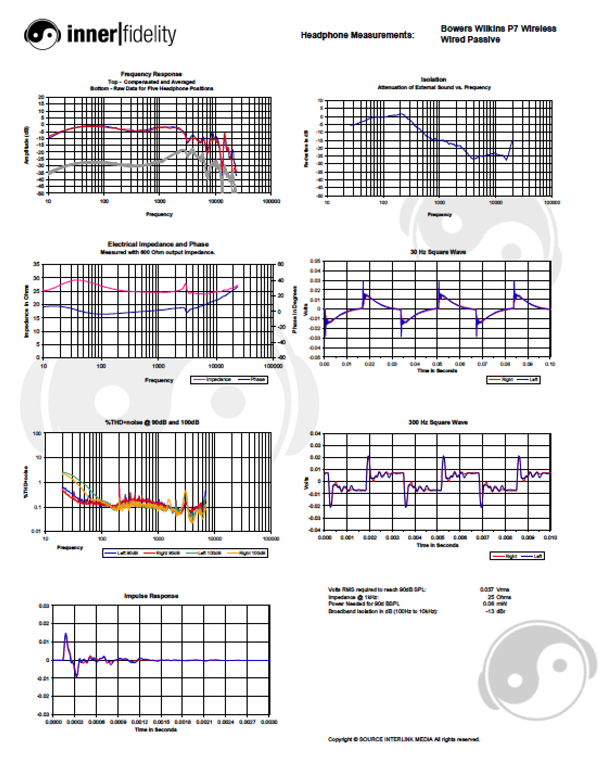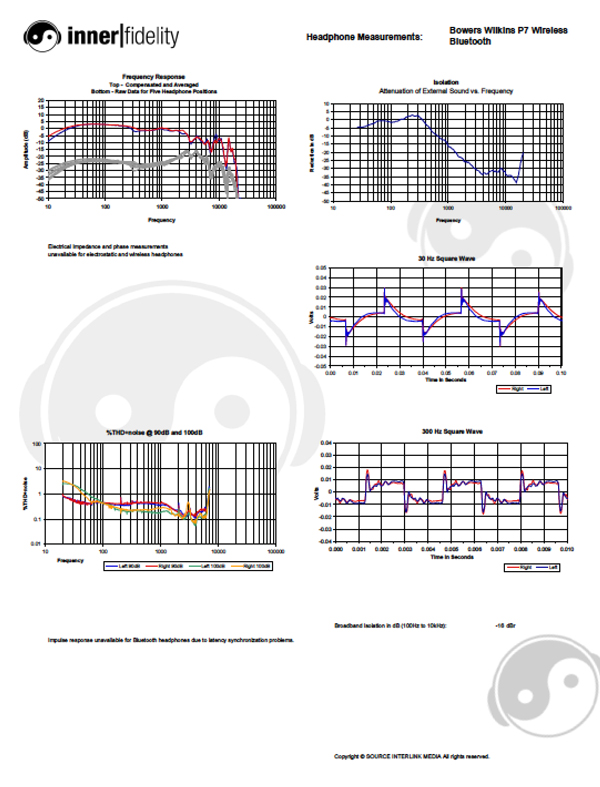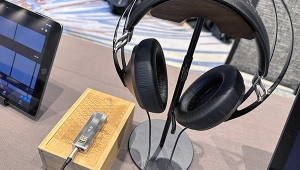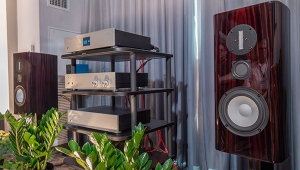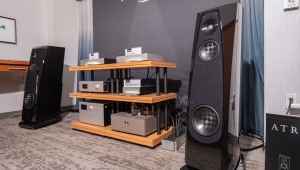| Columns Retired Columns & Blogs |
Bowers & Wilkins P7 Wireless Bluetooth Over-Ear Headphones Measurements
Click on graphs image to download .pdf for closer inspection.
Click on graphs image to download .pdf for closer inspection.
Unless otherwise noted I will be discussing the measurements of the P7 in wired mode.
Raw frequency response plots show a headphone quite near the Harman Target. Bass boost amount at about 5dB over the minima at 400Hz is appropriate, but the broad emphasized hump reduces bass extension and bleeds slightly into the mid-range. I would characterize this as a minor flaw; not bothersome but aparent.
The gentle, ever-increasing rise from 400Hz to 2.8kHz is very close to the target curve and give vocals a natural balance. While the response above 2.8kHz does closely follow the Harman target response, I feel there should be a more rapid drop after 3kHz to about 8kHz and then a leveling. I find the P7 slightly too emphatic in this area. However, I would not call this a flaw, but rather simply part of its lively character.
30Hz square wave is slightly swayback and falls to the zero line by the end of the waveform indicating the slight lack of bass extension and the slightly loose sound heard in listening.
300Hz square wave has an initial peak that is slightly too elevated for my taste, but that peak is clean and distinct. The following waveform is fundamentally horizontal indicating good treble/upper-mid-range balance, but a bit too noisy, which may be the slight graininess I heard.
Comparing raw frequency response of wired to wireless modes, it's clear that there is a slight change in the bass profile with the wireless response having a bass boost that extends a bit farther into the midrange. 30Hz square wave response also shows the latter part of the waveform going below zero, which typically indicates greater phase shift in the lows. I did hear the wireless mode as having slightly more problematic bass response being a bit looser and intrusive on the mid-range, but I also found these flaws to be minor.
Impulse response initial transient is likewise clear and distinct. Subsequent undershoot is quite normal, but following noise, while at a relatively low level, does persist for longer than desirable. Again, this may contribute to the graininess heard, but I would say that I heard it as less than the measurements might indicate.
THD+noise plots show a very clean headphone with very low levels of distortion, with the exception of some bass distortion at 100dBspl. I would characterise this plot as quite a bit better than usual for a headphone of this type.
Impedance plot shows a nominally 25 Ohm headphone with a primary driver resonance at 40Hz. The resonant peak at 3kHz is likely engineered in to tune the response peak and cause it to fall after 3kHz.
Isolation is about average for an over-ear sealed headphone and measures -13dBspl broadband.
Needing 37mVrms to achieve 90dBspl at the ear, this headphone will be driven to solid listening levels by portable devices.
- Log in or register to post comments
